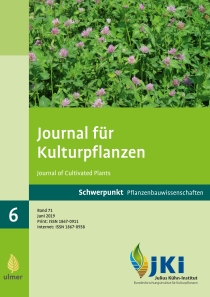Improved N transfer by growing catch crops – a challenge
DOI:
https://doi.org/10.5073/JfK.2019.06.01Keywords:
Catch crop, N transfer, soil nitrate pool, crop residuesAbstract
Based on the literature amended by some unpublished data and data compilations from the literature, this review identifies the mechanisms of nitrogen (N) losses from arable land and explores the potential of growing catch crops to mitigate N loss risks from the soil-plant system. The nitrate pool in the soil can be regarded as starting point of most of the N losses via gaseous losses and/or leaching from the soil-plant system. Depleting this pool, especially in autumn, lowers the risk of losses and related impairments of the environment. The input into the nitrate pool can be reduced by adjusting the N fertilization to the N demand of the preceding crop, thus decreasing the N surplus. Less intensive soil tillage after the harvest of the preceding crop may lessen N release from the soil organic matter and the crop residues. On the other hand, cover or catch crops and, to a lesser extent, main crops can take up considerable N amounts in autumn and prevent it from being lost. However, in order to reduce N fertilization of the subsequent crop due to an improved N transfer, the big challenge is to harmonize the N demand of the subsequent main crop and the N release from the catch crop residues. Since the latter depends on several factors like accumulated N amount, C:N ratio of the residues, incorporation date and weather conditions, it can hardly be estimated. Another crucial point is the choice of a suitable cover crop because it should not propagate pests or diseases of the main crops.
Published
Issue
Section
License
The content of the journal is licensed under the Creative Commons Attribution 4.0 License. Any user is free to share and adapt (remix, transform, build upon) the content as long as the original publication is attributed (authors, title, year, journal, issue, pages).
The copyright of the published work remains with the authors. The authors grant the Journal of Cultivated Plants, the Julius Kühn-Institut and the OpenAgrar repository the non-exclusive right to distribute and exploit the work.







